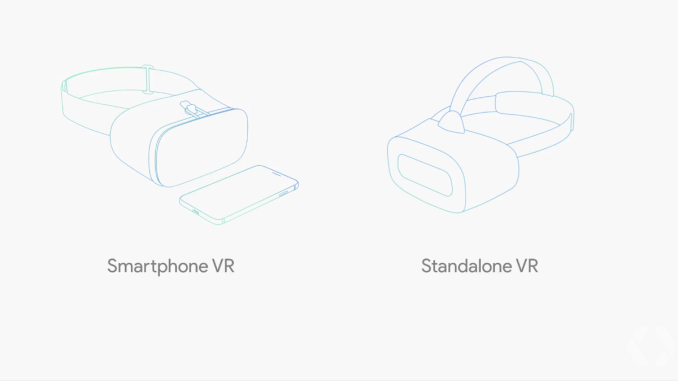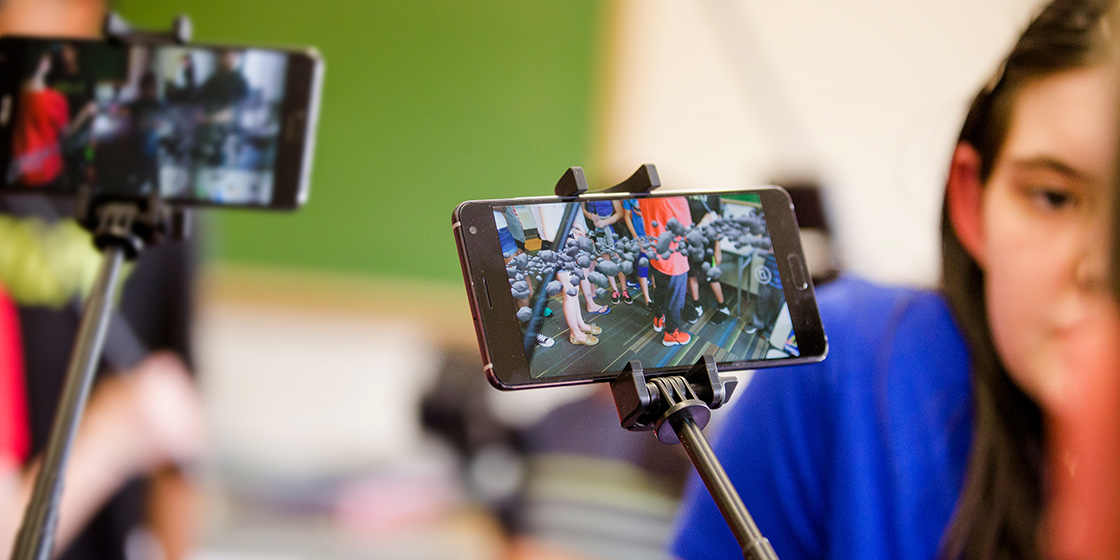Google I/O 2017: New AR/VR Experiences
by Matt Humrick on May 17, 2017 6:40 PM EST- Posted in
- VR
- Google IO
- Augmented Reality
- Vive

Today at its annual developer conference, Google made several announcements about what augmented and virtual reality projects it and its partners have been working on. Google just launched its Daydream VR platform 6 months ago, but already there are over 150 VR apps on Google Play and a small selection of Daydream phones, including the Google Pixel/Pixel XL, Huawei Mate 9 Pro, Moto Z/Moto Z Force, and ZTE Axon 7. We’ll be able to add a few more phones to this list later this summer, because Google revealed that Samsung’s Galaxy S8 and S8+ will receive a software update making them Daydream compatible. LG’s next flagship, likely the LG V30 that launches in the second half of the year, will also be Daydream ready.
Back in October, Google launched the Daydream View, a smartphone-powered VR headset, alongside its Pixel phones as part of its Daydream platform. The fabric-covered headset was designed to be comfortable to wear and serve as an affordable entry point for VR. Today during its opening keynote presentation, Google added a new device category to Daydream: standalone VR headsets. These standalone head-mounted displays (HMDs) are self contained and do not require a PC or smartphone and are completely wireless. Google worked with Qualcomm to create a reference design for partners, which means these products will likely be using a Snapdragon 835 SoC. The first Daydream HMDs will be an unnamed product from Lenovo and a new HTC Vive, both of which will arrive “later this year” and support Google’s WorldSense positional tracking, a new Daydream technology that’s derived from Project Tango.
Speaking of Tango, Google has used the technology’s ability to track motion, measure distance, and establish its position within an environment to enable its new Visual Positioning Service (VPS) that allows you to map indoor locations. While GPS establishes your location outdoors and guides you to a destination (a store, for example), VPS does the same thing indoors, guiding you to a specific location or even a specific product within the store. This AR experience uses cameras to recognize objects and landmarks within the environment and provides directions to your destination. VPS currently works in select museums and Lowe’s home improvement stores, and will require mapping and product/feature location information before the service is available in other indoor locations. It will also require a Tango-compatible device, like the ASUS ZenFone AR that will be available this summer.
Google also announced that it’s bringing Tango into the classroom with Expeditions AR. It said that over 2 million students have already taken virtual field trips using Expeditions VR with Google Cardboard over the past 2 years. Now with a Tango-enabled device, students can collectively experience and interact with virtual objects, perhaps a strand of DNA, anatomical models, or an internal combustion engine, within their environment. Expeditions AR lessons will be coming to schools this fall through a Pioneer Program.











18 Comments
View All Comments
mode_13h - Thursday, May 18, 2017 - link
Why do you guys highlight ZenFone AR, when Lenovo's Phab 2 Pro is Tango-compatible & already available? Huge, but available... and cheaper than the ZenFone AR will be.close - Thursday, May 18, 2017 - link
Haven't used the ZenFone but Lenovo's Tango attempt was so half-assed I wouldn't recommend it to anybody...bubblyboo - Thursday, May 18, 2017 - link
Probably because that's what Google highlighted in the keynote, with ZenFone AR showing how their Tango devices have been continually getting smaller.ryandennis016 - Tuesday, August 22, 2017 - link
Thanks a lot for posting the updates. This is one of the best tech sites right now https://apkauthority.comlammywatson - Thursday, September 20, 2018 - link
Well, this Url can help you out for sure. https://goo.gl/5nCSj4alexnardin009 - Monday, October 2, 2017 - link
Wow. This is the great article. And the lovely website I ever was seen. Also, read my blog here https://www.withoutverification.comajay92 - Monday, January 1, 2018 - link
Google is really make a lot of progress these days, I read a similar story at https://nosurvey.net/ and I'm quite shocked really.ultimatetechnews - Thursday, February 15, 2018 - link
u can also check new update on that site http://runescapemeleetrainingguide.wikidot.comdientusieunho - Thursday, March 15, 2018 - link
Absolutely really Amazing Article and good point in there.Thanks shared. visit my web : https://www.thietbisieunho.net/camera-nguy-trang/tranvan - Monday, March 26, 2018 - link
http://sucmanh.orghttp://sucmanh.org/ao-the-north-face/
http://sucmanh.org/gang-tay-chong-nang/
http://sucmanh.org/giay-leo-nui/